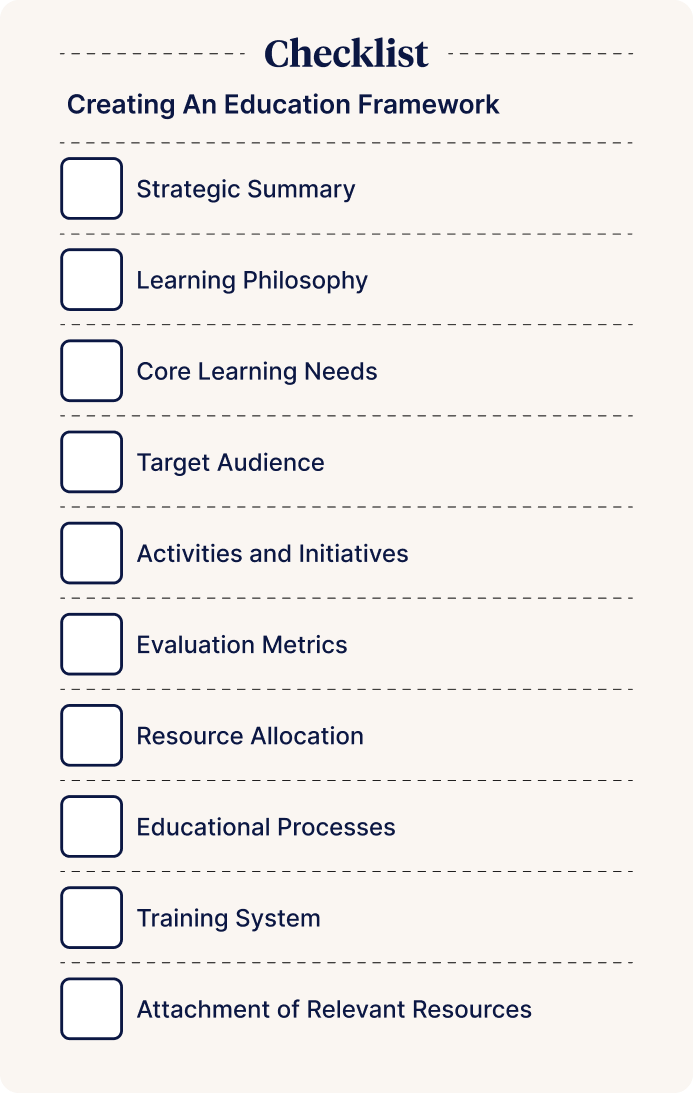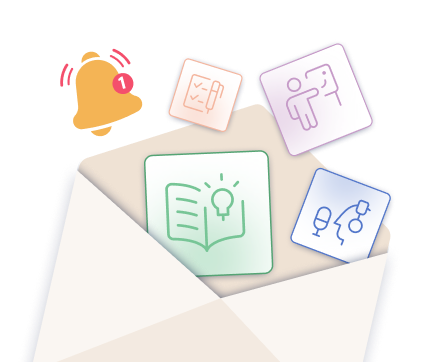For some organisations, education and training programs often begin and may even end with compliance-based induction and mandatory training. While these are necessary, focusing solely on them limits opportunities for growth and learning. To truly support our staff development, we need to expand our approach to include just-in-time, on-demand learning and other education initiatives. This is where a robust education framework comes into play.
The aim of this piece is to challenge the conventional view that induction and mandatory training are often sufficient. Instead, I want to open the conversation around the value of a more comprehensive training and education program that extends beyond compliance. By doing so, we can create an environment that fosters continuous learning, closes knowledge gaps, and supports staff at every stage of their professional journey.
That sounds great, right? But how do we actually do this? How do we align educational strategies to close gaps in knowledge, skill, and practice or improve performance in line with organisational priorities? The answer lies in developing a robust education framework.
What is an Education Framework?
An education framework is a strategic document that outlines how an organisation, specifically the education or L&D team or department, will meet its learning and development goals.
Why is an Education Framework Needed?
An education framework ensures that training and education are not only focused on compliance but also support broader goals like professional growth, improved clinical practice, and enhanced workforce competence.
An education framework helps an organisation to:
- Ensure that training is aligned with its strategic priorities.
- Provide clear direction for the L&D team, making it easier to plan and implement various educational initiatives.
- Measure the effectiveness of training programs in a structured way, enabling continuous improvement.
Who Creates an Education Framework?
The responsibility for drafting the education framework usually lies with the learning and development (L&D) team or education team in collaboration with organisational leaders. Given the strategic focus, the framework should be reviewed and signed off by senior management or the organisation’s governing body, ensuring alignment with organisational goals and broader strategic priorities. It should be treated like a living document, reviewed annually or whenever significant changes occur within the organisation, and be easily accessible and adaptable.
What Should an Education Framework Include?
Creating an education framework involves considering several key aspects. Here’s a brief overview of what sections to include.
- Strategic Summary: This section outlines the core strategy that the education and L&D team aims to achieve, linking it directly to the organisation's mission, vision, and values. It answers the question, "What does success look like?" and helps guide all subsequent planning and decision-making.
- Learning Philosophy: It may be necessary to describe the desired culture of learning and engagement within the organisation, particularly if leadership or organisational strategy has recently changed. It helps set the tone for how education is delivered and received, ensuring that staff are encouraged to embrace the culture of learning, not just the need to complete certain tasks.
- Core Learning Needs: Here, we want to identify the key learning areas that align with their goals, using data to validate priorities. Drawing on Michael Porter’s definition of strategy, we also want to be clear not just on what we’re working on but also on what we’re choosing not to work on. Having a clear list of deprioritised items is just as helpful!
- Target Audience: Different staff, clinicians, teams, and roles have different learning needs. This section identifies who the organisation is supporting, including their unique learning needs, regulatory requirements, such as formal CPD requirements, and how those needs will be met.
- Activities and Initiatives: Briefly list the range of activities and programs, including just-in-time learning modules, any preceptorship programs, and up-skilling or cross-skilling opportunities available. Each initiative should have a clear purpose and desired outcome, with a brief description of the intended target audience.
- Evaluation Metrics: Effective evaluation is crucial. This section outlines how the success of each educational initiative will be measured at the activity and overall department levels. It should include a broad discussion of what data will be collected and the methods used to evaluate whether learning outcomes are met. There are many different examples of data at various evaluation levels that L&D teams can use to evaluate the effectiveness of training and education initiatives. Read more about evaluation methods here.
- Resource Allocation: It’s vital that we can communicate the resources needed for delivering each initiative, including staff time, expertise, budget required and tools. This section helps align the scope of training programs with available resources, or mounts a valid case for additional resources if required.
- Educational Processes: Developing a robust education program needs a good process, ideally following the plan-implement-evaluate cycle. Thus, this section describes the key steps within each phase of the cycle.
- Training System: Here, we would describe the supporting technology and systems, such as learning management systems (LMS), that help deliver and track training. The importance of evaluation is critical here, too, as this section ideally outlines when these tools are reviewed and how their effectiveness is measured.
- Attachment of Relevant Resources: This final section is useful because linking the framework to relevant policies, procedures, and training plans helps ensure consistency and alignment with other working documents within the organisation.

Benefits of an Education Framework
Building a robust education framework might seem like a daunting task, but the benefits are significant. It ensures effective resource use, provides clarity on priorities, and defines learning needs, goals, and success measures. It aligns education strategies with organisational goals and serves as a central reference for new and existing L&D staff. Importantly, an education framework offers a transparent and objective way for L&D teams to track and evaluate their progress and demonstrate their impact, plus the impact and value of education to the organisation.
References and Useful Resources
- Russell, K, Coventry, T, Tamaliunas, S & Juliff, D 2023, ‘Graduate Nurse Education Programs: Transition Pathway for Registered Nurse Employment’, OJIN: The Online Journal of Issues in Nursing, vol. 28, no. 2, viewed 14 September 2024, https://ojin.nursingworld.org/table-of-contents/volume-28-2023/number-2-may-2023/articles-on-previously-published-topics/graduate-nurse-education-programs/
- Kurnat-Thoma, E, Ganger, M & Channell, L 2017, ‘Reducing Annual Hospital and Registered Nurse Staff Turnover—A 10-Element Onboarding Program Intervention’, SAGE Open Nursing, viewed 9 September 2024, https://journals.sagepub.com/doi/full/10.1177/2377960817697712
- Young-Brice, A, Farrar-Stern, K & Malin, M 2022, 'Comprehensive Onboarding and Orientation to Support Newly Hired Faculty in a Nursing Program', Nurse Educator, vol. 47, no. 6, pp. 347-351, viewed 30 September 2024, https://pubmed.ncbi.nlm.nih.gov/35816199/
- Hall, S, Taylor, S & Altobar, C 2019, 'Transition to Practice: Onboarding Components for Establishing and Sustaining Healthy Work Environments', AACN Advanced Critical Care, vol. 30, no. 4, pp. 416-420, viewed 30 September 2024, https://europepmc.org/article/med/31951662
- Valdes, EG, Sembar, MC & Sadler, FMJ 2023, 'Onboarding New Graduate Nurses Using Assessment-Driven Personalized Learning to Improve Knowledge, Critical Thinking, and Nurse Satisfaction', Journal for Nurses in Professional Development, vol. 39, no. 1, pp. 18-23, viewed 30 September 2024, https://journals.lww.com/
- Wright, D 2018, The Ultimate Guide to Competency Assessment in Health Care, 3rd edition, Creative Health Care Management, Minneapolis, MN.
- Harper, M (ed.) 2022, Core Curriculum for Nursing Professional Development, 6th edition, Association for Nursing Professional Development, Chicago, IL.
- Harper, M & Maloney, P (eds.) 2022, Nursing Professional Development Scope & Standards of Practice, 4th edition, American Nurses Association, Silver Spring, MD.
Author
Zoe Youl
Zoe Youl is a Critical Care Registered Nurse with over ten years of experience at Ausmed, currently as Head of Community. With expertise in critical care nursing, clinical governance, education and nursing professional development, she has built an in-depth understanding of the educational and regulatory needs of the Australian healthcare sector.
As the Accredited Provider Program Director (AP-PD) of the Ausmed Education Learning Centre, she maintains and applies accreditation frameworks in software and education. In 2024, Zoe lead the Ausmed Education Learning Centre to achieve Accreditation with Distinction for the fourth consecutive cycle with the American Nurses Credentialing Center’s (ANCC) Commission on Accreditation. The AELC is the only Australian provider of nursing continuing professional development to receive this prestigious recognition.
Zoe holds a Master's in Nursing Management and Leadership, and her professional interests focus on evaluating the translation of continuing professional development into practice to improve learner and healthcare consumer outcomes. From 2019-2022, Zoe provided an international perspective to the workgroup established to publish the fourth edition of Nursing Professional Development Scope & Standards of Practice. Zoe was invited to be a peer reviewer for the 6th edition of the Core Curriculum for Nursing Professional Development.



